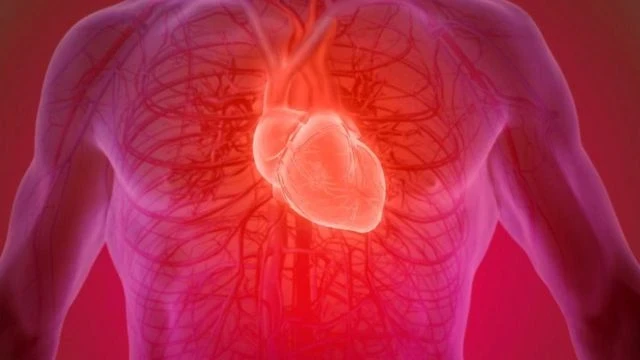- Professor Pershukov is the head of the Department of Hospital Therapy with a course in Radiological Diagnostics and Oncology at JAGU, as well as a full member of the American College of Cardiology and the American Society of Cardiovascular Angiography and Interventions.
- Why does myocardial infarction remain one of the leading causes of death?
- Myocardial infarction has not disappeared from our lives. Ischemic heart disease continues to rank first among causes of mortality, and myocardial infarction is the most dangerous acute form of this disease, leading to the highest number of fatalities. Despite our efforts in treatment, myocardial infarction still leads among causes of death, surpassing conditions such as stroke, Alzheimer's disease, and cancer, especially in developed countries.
- What makes myocardial infarction so difficult to treat?
- There are several factors. First, modern treatment methods for infarction require significant costs and high technology. This includes coronary angiography, balloon angioplasty, stenting, thrombectomy for severe thrombosis, and other complex procedures such as extracorporeal membrane oxygenation (ECMO) or emergency coronary bypass surgery. All these methods require specialized equipment and highly qualified medical personnel.
- Is it possible to effectively treat myocardial infarction in a district hospital with a single angiography unit?
- Yes, treatment is possible, and it can be beneficial, but not for all patients. If a patient is experiencing cardiogenic shock with blood pressure below 90/60 mmHg, placing a stent may not save their life, as the damaged heart muscle loses its function, and restoring the ejection fraction takes time.
In young people, collateral vessels typically do not develop in time, and their condition can be even more critical than that of older patients. For such cases, mechanical support is necessary—from IABP to ECMO, which significantly increases the cost of treatment.
In the event of a rupture of the myocardium or coronary arteries, the patient requires emergency surgery and connection to a heart-lung machine, which necessitates round-the-clock access to a cardiac surgical team.
Take, for example, the preparation of the emergency hospital in Sochi for the 2014 Olympics: a helipad was built on the roof for the rapid transport of the most complex patients, such as those suffering from myocardial infarction and cardiogenic shock, to Krasnodar, where cardiac surgeons are available 24/7.
- What are the recommendations for patients with myocardial infarction in Kyrgyzstan?
- Such cases need to be treated. Ignoring patients with infarction is wrong. First aid begins with aspirin, which should be provided by the ambulance doctor in the first minutes. The patient should receive balloon dilation of the infarct-related artery within 90 minutes after diagnosis.
If it is impossible to transport the patient to a hospital with a round-the-clock angiography service, thrombolysis is indicated for ST-segment elevation on the ECG. Severe cases should be referred immediately to specialized facilities.
For example, in Italy, where the mortality rate from acute myocardial infarction is less than 4%, not all small hospitals have cardiac surgical teams, but they can refer patients with complications to large medical centers. This system operates smoothly, providing patients with the necessary assistance.
For Kyrgyzstan, as a mountainous country, it is important to develop optimal transportation schemes for patients with infarction to the nearest hospitals with round-the-clock angiography. A second "shoulder" of delivery must always be available, as it is the cardiac surgical assistance in complex cases that can save lives.
Every hospital that offers treatment for myocardial infarction should be integrated into a single network of institutions capable of performing angioplasty and providing cardiac surgical care. It is important to establish rapid communication between hospitals using ambulance vehicles and air ambulance services.
Without these measures, Kyrgyzstan will not be able to significantly reduce the mortality rate from myocardial infarction—only on paper, in reports. As the ancient Romans said: Sapientis sat!











































